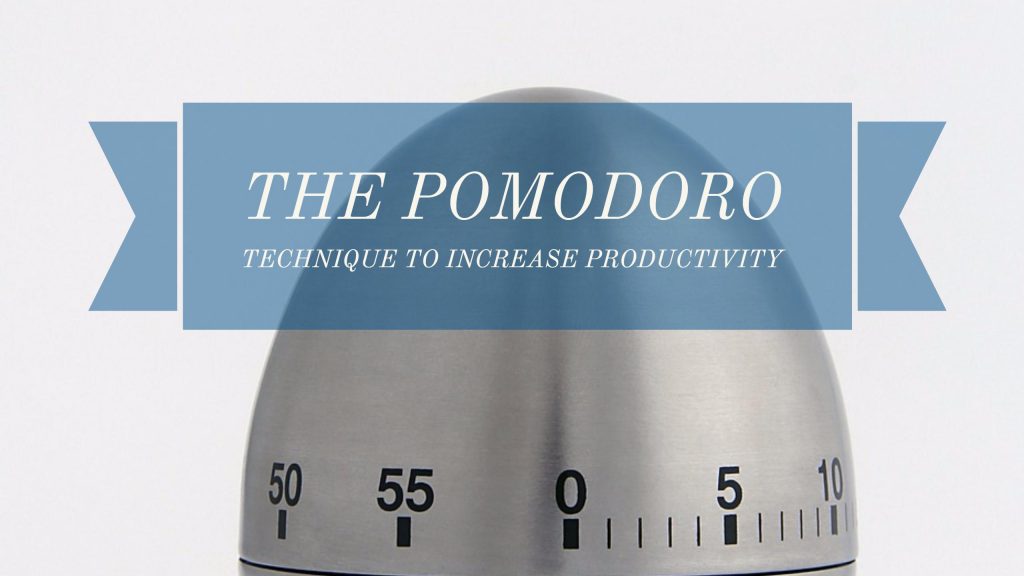When I used to have a large project that I needed to work on, I used to force myself to spend countless hours concentrating on the same task. I was naïve in thinking that the more hours I put in, the more productivity I would have. Since I have been using the Pomodoro Technique, I have been able to greatly increase my focus while not draining me of my energy.
Similar to my College and University years, I tried to cram all my work into long sessions. It was easier then. There weren’t as many distractions available as there are now. Back then, I didn’t even own a computer, not to mention a smart phone or IPad. With social media and the constant pinging of notifications, staying focused for long periods can be a challenge.
Do you find that your productivity fluctuates depending on the day? Some days you accomplish every task on your list. Then there are those days where you find yourself “surfing for ideas” but not really getting anywhere.
Productivity is not a time allotted concept. Nor, is it the number of tasks you accomplish. It is an alignment between a progression towards your goals and the discipline to keep building those habits to keep you moving forward.
During his first year of university, Francesco Cirillo quickly realized that “cramming” was not helping him with his studies. He found himself getting distracted and not making use of his study time efficiently. To combat this, he grabbed a tomato-shaped kitchen timer, set it for 10 minutes, and tried to work solidly for those 10 minutes without doing anything else. Francesco found that this method worked for him and forced himself to focus before rewarding himself with a break.
He continued to test and tweak this method and Cirillo settled on a structured framework that he called the Pomodoro Technique. Pomodoro, the Italian word for “tomato” was a reference to his original kitchen timer.
Basic concepts:
- Get a timer
- Decide on a task you want to work on
- Set your timer for 20-25 minutes
- During that time, work on the task and nothing else. Close any apps or eliminate any possible distractions.
- At the end of that time, take a short five-minute break. Stand up, stretch, drink water or do anything that can refresh you. Stay away from anything that will tempt you into taking a longer short break.
- You’ve just completed your first Pomodoro.
- After your short break set your timer again for 20-25 minutes.
- Once you’ve completed four Pomodoros in a row, take a longer 20-minute break.
Pomodoro encourages you to work in short focused sprints. The regular breaks help keep your energy level high and bolster your motivation. Highly focused work sessions help you manage your time more effectively and makes larger projects seem less overwhelming.
However, the method may not suit everyone. Some people might find regular short breaks too distracting, especially during times when inspiration is flowing. It might also be difficult to stick to a disciplined schedule of Pomodoro depending on your work environment.
Here’s why it can work:
When you break large tasks into smaller focused tasks or sprints, it allows you to maintain high energy levels and increase your productivity.

When there is something that you know you need to do but are just not motivated to do it, try committing to a small goal first. If you know that housework needs to be done but are finding it difficult to start, commit to just 15 minutes of housework to start. Often, I use this self-motivating starter method to begin a task I have been procrastinating on. What I quickly discover is that once I start the task, I am able to keep going beyond the original time commitment.
What’s important to remember?
Keep in mind that the goal is to keep your energy levels high and to maintain focus on a single task at hand in order to increase productivity. You can adapt the work periods and break periods to suit what works best for you. Listen to your body. If your mind starts to wander, or if you start feeling tires, don’t push through to the end of the session.
I recommend that you experiment with what works for you. It may be three Pomodoros followed by a 10-minute break, or three sessions of 30 minutes with a 5-minute break in-between. There are no set rules. You decide what works for you.
Have you ever tried the Pomodoro technique?

